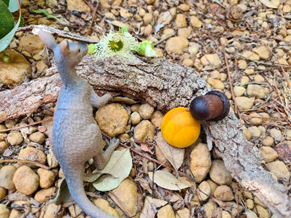1. Aboriginal and Torres Strait Islander perspectives

Over the next year, educators can begin to implement and work with both Version 1 and 2 before full implementation in 2024.
ELF will look at aspects of the new EYLF (V2.0) and unpack some of the changes over the next few months:
Our first focus: Aboriginal and Torres Strait Islander perspectives are strengthened and highlighted throughout the frameworks – in the vision, the principles, practices, and outcomes.
The Principles have been expanded from 5 to 8 and Aboriginal and Torres Strait Islander perspectives is one of the new ones with the purpose of:
· Strengthening Aboriginal and Torres Strait Islander knowledges, cultures and perspective throughout the EYLF
· Actively responding to the 2019 Alice Springs Agreement (Mparntwe) by building on and including local, regional and national cultural knowledges and experiences.
· Enabling children to understand and celebrate the rich and diverse histories and cultures of Aboriginal and Torres Strait Islander peoples.
Practices have been reconsidered and Cultural Responsiveness replaces Cultural Competence.
· This expects educators to have a deeper understanding of and a commitment to embedding Aboriginal and Torres Strait Islander perspective in their professional practice through respecting cultures of others’, being more self-reflective and ensuring more learning and implementation of professional practice.
The Learning Outcomes are now also supported by the inclusion of Racial Discrimination Act.
· Aboriginal and Torres Strait Islander cultures and ways of knowing are explicitly documented in each learning outcome with focus on connectedness to family and community, connectedness to country, kinship systems, spirituality and the oral telling of stories.
How ELF has begun to implement a deeper understanding:
With this background in mind, my aim is to bring some examples of respect for Aboriginal culture in the place ELF works, lives and plays on, Wiilman Boodja (country).
1. I would like to share ELF’s acknowledgement of country, which is written to show my deep respect for the land, the nature on it and the Noongar people who have protected it and lived on it for so many years. I am a person who came across the seas and feel a deep sense of gratitude to be able to call this land home.
“I respectfully acknowledge the past and present traditional custodians of the lands and waters on which we all live, throughout Western Australia. I acknowledge and thank the Noongar people as the traditional custodians of the land on which I live and learn and recognise their continuing connection to this beautiful place. I thank them for protecting it since time immemorial.
It is a privilege to stand on Wiilman Boodja.”

2. The Noongar people have 6 seasons throughout the year. This resonates with me as it makes sense when we consider what is happening to the plants, animals, winds and temperatures. There is no starting or end date to each season, rather it is felt, as nature guides change. The Aboriginal culture is strongly built on tens of thousands of years of knowledge and understanding of the land.
Around February to March is the Noongar season of Bunuru. It is the hottest time of the year, with easterly winds and usually no rain. (If you live close to the coast, there is a sea breeze most evenings.) Bunuru is a time of white flowering gums, including marri, jarrah and ghost gums.
Traditionally, it is a season where fish, crab and mussel were caught as main foods, along with roots and banksia and wattle blooms.
The lack of water means that we need to put out water in our backyards.

In my garden, I have bobtail goannas (yoorn), racehorse goannas (karda) and frogs (kooyar) visiting almost daily and during the afternoon and early evening, my birdbaths are visited by magpies (koolbardi), willy wagtails (djiti djiti), blue wrens, honey eaters and robins. Each evening the red-tailed black cockatoos (karrack) fly over to the eucalypts in the bush.
I love adding to my own knowledge (kaartdijin) by using some Noongar names when I talk about the creatures in my garden.
And children love using these names too. One of our favourites is djiti djiti because it is just like the sound a willy wagtail makes.
3. Play with materials in the place you live. This is how we learn to actively notice and walk amongst the land. When the seasons change, I like to collect leaves and flowers and use them in our play. You don’t have to make the play only about Aboriginal and Torres Strait Islander pieces but rather add these elements to everyday play. e.g bring leaves and flowers into your home corner or have gum nuts in the block area. By talking about them in relation to the season or how they might be used – food or medicine, you are integrating culture into your learning space. It becomes a continual part of the learning.

3. Songs. There are songs being translated into Noongar that we can introduce our young children too. Children love the creativity and freedom of music and adding language builds knowledge in a natural way. Heads, Shoulders, Knees and Toes and Twinkle Twinkle Little Star are fun ones to start with. Listen to them both below for pronunciation too.

Djinda djinda Kanangoor

Bring the families to you and take the learning to your families to enrich and embed this incredible culture into our young children’s lives.

Comments